| ENDANGERMENT |
FACTORS TO WATCH ON |
PRECAUTIONARY METHODS |
Electric Shock can kill
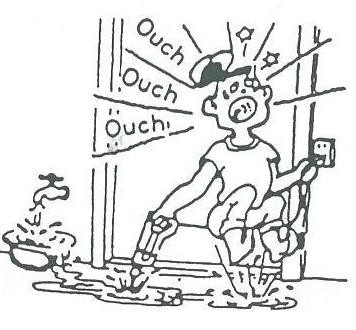
|
 Wetness Wetness
 Welder in or on workplace Welder in or on workplace
 Confined space Confined space
 Electrode holder and cable insulation Electrode holder and cable insulation
|
 Insulate welder from workplace and ground using dry Insulate welder from workplace and ground using dry
insulation like rubber mat or wood materials.
 Do not touch on the HOT parts or electrode with bare skin Do not touch on the HOT parts or electrode with bare skin
or wet clothing.
 Wear dry, hole-free gloves. Wear dry, hole-free gloves.
 Keep electrode holder and cable insulation in good Keep electrode holder and cable insulation in good
condition. Do not use if insulation damaged or missing.
 If requirement to work in wet area, use a semiautomatic If requirement to work in wet area, use a semiautomatic
constant voltage welder or stick welder with voltage
reducing device.
|
Fumes & Gases can be dangerous
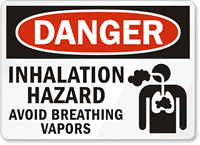
|
 Confined area Confined area
 Positioning of welder’s head Positioning of welder’s head
 Lack of general ventilation Lack of general ventilation
 Electrode types, i.e. manganese, chromium, etc. Electrode types, i.e. manganese, chromium, etc.
Refer to MSDS
 Base metal coatings, galvanize, paint. Base metal coatings, galvanize, paint.
|
 Use ventilation or exhaust to keep air breathing zone clear, Use ventilation or exhaust to keep air breathing zone clear,
comfortable.
 Use helmet and positioning of head to minimize fume for Use helmet and positioning of head to minimize fume for
breathing.
 Read warnings instruction for electrode on the electrode Read warnings instruction for electrode on the electrode
container & material safety data.
 Provide additional ventilation/exhaust where special Provide additional ventilation/exhaust where special
ventilation requirement is needed.
 Use special care when welding in a confined area. Use special care when welding in a confined area.
 Do not weld unless ventilation is adequate. Do not weld unless ventilation is adequate.
|
Welding sparks can cause fire or explosion
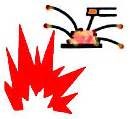
|
 Containers which have held combustibles Containers which have held combustibles
 Flammable materials Flammable materials
|
 Do not weld on containers which have held combustible Do not weld on containers which have held combustible
materials (unless strict AWS F4.1 procedures are
followed). Check before conducting welding work.
 Remove flammable materials from welding area or shield Remove flammable materials from welding area or shield
from sparks & heat.
 Keep a fire watch in area during and after welding Keep a fire watch in area during and after welding
 Install a fire extinguisher in the welding designated area. Install a fire extinguisher in the welding designated area.
 Wear fire retardant clothing and hat. Use earplugs when Wear fire retardant clothing and hat. Use earplugs when
welding overhead.
|
Arc rays can burn eyes and skin
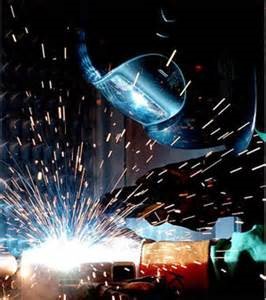
|
 Process: gas-shielded arc most severe Process: gas-shielded arc most severe
|
 Select a filter lens which is comfortable for you while Select a filter lens which is comfortable for you while
welding.
 Always use helmet when welding Always use helmet when welding
 Provide non-flammable shielding to protect others. Provide non-flammable shielding to protect others.
 Wear clothing which protects skin. Wear clothing which protects skin.
|
General work area hazards
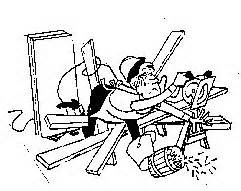
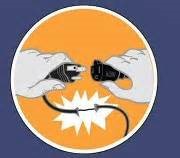
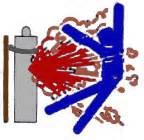
|
 Cluttered area Cluttered area
|
 Keep cables, materials, tools neatly organised Keep cables, materials, tools neatly organised
|
 Indirect work (welding ground) connection Indirect work (welding ground) connection
|
 Connect work cable as close as possible to area where Connect work cable as close as possible to area where
welding is being performed. Do not allow alternate circuits
through scaffold cables, hoist chains, ground leads.
|
 Electrical equipment Electrical equipment
|
 Use only double insulated or properly grounded equipment Use only double insulated or properly grounded equipment
 Always disconnect power to equipment before servicing Always disconnect power to equipment before servicing
|
 Gas cylinders Gas cylinders
|
 Never touch cylinder with the electrode Never touch cylinder with the electrode
 Never lift a machine with cylinder attached Never lift a machine with cylinder attached
 Keep cylinder upright and chained to support Keep cylinder upright and chained to support
|